#Folklore stuff
Text
Grian but make him a bloodsucking creechur from slavic folklore i dunno

"Strzygoń, is a male demon [female is called Strzyga] that according to Slavic mythology, every Strzygoń was initially a human being. Strzygoń is an eerie creature, often with bird and owl-like features. It has big claws and is merciless in nature, Strzygoń in order for his demonic body to survive, needs to hunt humans and drink their blood constantly. Barns, woods, and crossroads are his favorite places to be during the night. The word had it that people who were born with two sets of teeth, with no hair in their armpits, and with a unibrow or some kind of a birthmark on their back were the ones to turn into Strzyga/Strzygoń after they die. Allegedly, these people were also born with two hearts and two souls. The word goes, once a person dies (usually at a young age), one of their two hearts stops beating. The other one lives on and gives life to their second, demonic nature. Strzygoń remembers his human life. Therefore, he will start hunting those who mocked him or somehow hurt him before he died. "
So yep it's Grian, because 1) Bird like features 2) all the watcher stuff gives me the "transformation into a monster" vibe, which is kinda related to Strzyga/Strzygoń stuff 3) he has the vibes he's a menace
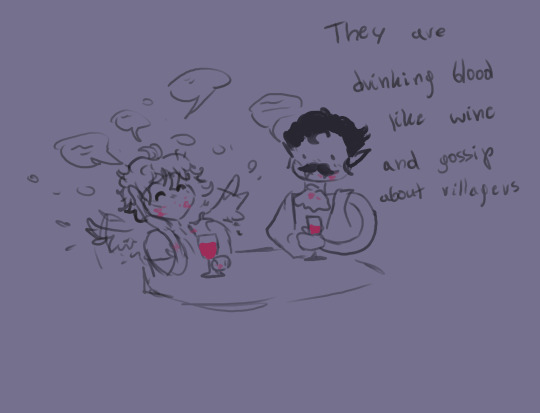
Also Mumbo is a Vampire or Upiór can't decide which yet even though they are very similiar [Vampire fits better but,,,, slavic blood-sucking buddies,,,???]
Yeah here I am drawing mcyt as some mythology/folklore creechurs and monsters
anyways Doc as a chimera sounds like something good to draw probably going to do something with that
#hermitcraft#hermitblr#grian#grian fanart#mumbo jumbo#mumbo fanart#folklore stuff#they are special to me <3#blood sucking buddies#one day I'll figure out what Scar could be#maybe something that also drinks blood#so they can have parties :D#tw blood#hermitcraft au#hermitcraft smp
19 notes
·
View notes
Text
Some thoughts for the karlnapity fae au I wrote a while ago. I'm thinking about working on it again. (and might rewrite part 1 for ao3) Some of this will be spoilers.
Karl is a monarch in a Seelie court. (I haven't decided on the courts in this au yet.) As said monarch he has the ability to alter the flow of time in his court, Seelie lands, and maybe even other parts of the Faerie. But not without great risks. Messing with time is always dangerous.
Sapnap is Karl's knight, and an Unseelie. One of the few, if not only, in Karl's court. Seelies tend to look down upon Unseelie, but you're pretty fucked if you show any of that infront of Karl. He has a lot of scars and while Unseelie warriors&knights usually tend to take pride in them, Sapnap's are hidden away under clothes and armor. The one on his throat and the cut in his brow are the exceptions. Sapnap knows more about humans than Karl as he's very close friends with Dream and George.
Quackity is human and a university student. Appearently in his friend group he's one of the few not in know about the fae.
I'm thinking BadBoyHalo is a wild fae. Wild fae are those not associated with any court. In this he's not Sapnap's father, but he did take care of him for a while.
Dream is human, but he's sligthly fae touched. He has a mask that lets him traverse the faerie on his own more easily and safely. George is also human and pretty close friend with Quackity as well.
Wilbur is half fae who pass as human. When Quackity finally finds out, some of the weird stuff he's said and done suddenly makes a lot more sense. Wilbur and Quackity are friends. Wilbur owns and works at the little book café Quackity likes to study at. He also lives in the appartment above the book café.
Philza was human. The thing about the Faerie is the longer you stay in it, the more it changes you. The Faerie and its people also happened to really take a liking to him, even long before he married one of the most powerful Unseelie Queens. Technically his title is royal consort, but her people regards him as their beloved King almost as much as she is their loved Queen.
Technoblade, Tubbo, and Tommy are all human. Techno is scarier than most fae and even to a lot of fae folk... That is if you don't know him. Tubbo and Tommy are def trouble makers than need to be saved from the Faerie from time to time.
Techno pretends to be upset that his best friend went off to basically be an unseelie King, but is extremely happy for him. Wilbur is how Phil and Kristin met. No actual family ties, but found family for sure.
Ranboo doesn't know he's fae, but he is a secretly a court heir. He befriends Tubbo and then Tommy and eventually somehow gets folded into the entire friend group.
Fundy is fae. There's some human in there, but generally if you're more than half fae you are fully considered fae. Half fae who can't pass as human and/or stays in the Faerie for long enough are often counted as fully fae as well. Sneaky fox you both love and hate.
I haven't decided on Niki, but felt bad leaving her out P: regardless of what she is, she has her own bakery and supply baked goods for Wilbur's book café.
Antfrost and Awesamdude are also wild fae. Though unlike BBH who has always been one, they used to be court affiliated.
Skeppy is a seelie, but mostly stays either with Bad or in the human ream. He often try to troll Technoblade, and fails. He usually wears glamour to look human even in the Faerie.
Callahan is jötunn. (This is me bringing in more lore from my own story. Sorry not sorry) Jötnar are forces of nature, even more so than fae. He's one of the few that are still around and actually interacts with others, even if he doesn't speak.
Ponk??? Human??? Yes.
Punz is human and Purpled is his younger fae brother.
Connor is Sonic.
#Karlnapity#Dsmp fae au#I haven't decided on other characters yet#Connor is obvs a joke#Or is it#dream smp#I don't think I want Wilbur to be Fundy's dad even tho it fits with him being mostly fae part human#Maybe younger half brother or more found family#Like if he's the dad it's adoptive#Also considering including non-dsmp mcytbers#Like we got Joko as a goblin#Why do you think he does all those goblin checks#Goblin as in a small fae creature like brownie or imp or kobolds#Folklore stuff#His true form would literally just be his lil avatar dude#Just a lil fella#Clown Pierce could be a Dullahan#That would be fuckin perfect#Slightly altered version but still OP#Watch me expand the entire thing to multiple fics when it was just supposed to me filling out the universe a little#But still mostly just centre around karlnapity
8 notes
·
View notes
Note
please help me- i used to be pretty smart but i’m having so much trouble grasping the concept of diegetic vs non-diegetic bdsm!
gfkjldghfd okay first of all I'm sorry for the confusion, if you're not finding anything on the phrase it's because I made it up and absolutely nobody but me ever uses it, but I haven't found a better way to express what I'm trying to say so I keep using it. but now you've given me an excuse to ramble on about some shit that is only relevant to me and my deeply inefficient way of talking and by god I'm going to take it.
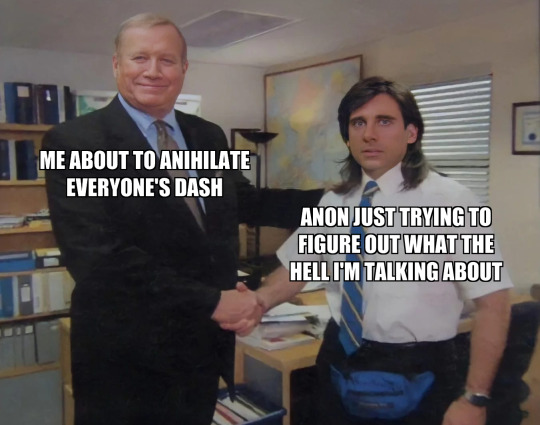
SO. the way diegetic and non-diegetic are normally used is to talk about music and sound design in movies/tv shows. in case you aren't familiar with that concept, here's a rundown:
diegetic sound is sound that happens within the world of the movie/show and can be acknowledged by the characters, like a song playing on the stereo during a driving scene, or sung on stage in Phantom of the Opera. it's also most other sounds that happen in a movie, like the sounds of traffic in a city scene, or a thunderclap, or a marching band passing by. or one of the three stock horse sounds they use in every movie with a horse in it even though horses don't really vocalize much in real life, but that's beside the point, the horse is supposed to be actually making that noise within the movie's world and the characters can hear it whinnying.
non-diegetic sound is any sound that doesn't exist in the world of the movie/show and can't be perceived by the characters. this includes things like laugh tracks and most soundtrack music. when Duel of Fates plays in Star Wars during the lightsaber fight for dramatic effect, that's non-diegetic. it exists to the audience, but the characters don't know their fight is being backed by sick ass music and, sadly, can't hear it.
the lines can get blurry between the two, you've probably seen the film trope where the clearly non-diegetic music in the title sequence fades out to the same music, now diegetic and playing from the character's car stereo. and then there are things like Phantom of the Opera as mentioned above, where the soundtrack is also part of the plot, but Phantom of the Opera does also have segments of non-diegetic music: the Phantom probably does not have an entire orchestra and some guy with an electric guitar hiding down in his sewer just waiting for someone to break into song, but both of those show up in the songs they sing down there.
now, on to how I apply this to bdsm in fiction.
if I'm referring to diegetic bdsm what I mean is that the bdsm is acknowledged for what it is in-world. the characters themselves are roleplaying whatever scenarios their scenes involve and are operating with knowledge of real life rules/safety practices. if there's cnc depicted, it will be apparent at some point, usually right away, that both characters actually are fully consenting and it's all just a planned scene, and you'll often see on-screen negotiation and aftercare, and elements of the story may involve the kink community wherever the characters are. Love and Leashes is a great example of this, 50 Shades and Bonding are terrible examples of this, but they all feature characters that know they're doing bdsm and are intentional about it.
if I'm talking about non-diegetic bdsm, I'm referring to a story that portrays certain kinks without the direct acknowledgement that the characters are doing bdsm. this would be something like Captive Prince, or Phantom of the Opera again, or the vast majority of bodice ripper type stories where an innocent woman is kidnapped by a pirate king or something and totally doesn't want to be ravished but then it turns out he's so cool and sexy and good at ravishing that she decides she's into it and becomes his pirate consort or whatever it is that happens at the end of those books. the characters don't know they're playing out a cnc or D/s fantasy, and in-universe it's often straight up noncon or dubcon rather than cnc at all. the thing about entirely non-diegetic bdsm is that it's almost always Problematic™ in some way if you're not willing to meet the story where it's at, but as long as you're not judging it by the standards of diegetic bdsm, it's just providing the reader the same thing that a partner in a scene would: the illusion of whatever risk or taboo floats your boat, sometimes to extremes that can't be replicated in real life due to safety, practicality, physics, the law, vampires not being real, etc. it's consensual by default because it's already pretend; the characters are vehicles for the story and not actually people who can be hurt, and the reader chose to pick up the book and is aware that nothing in it is real, so it's all good.
this difference is where people tend to get hung up in the discourse, from what I've observed. which is why I started using this phrasing, because I think it's very crucial to be able to differentiate which one you're talking about if you try to have a conversation with someone about the portrayal of bdsm in media. it would also, frankly, be useful for tagging, because sometimes when you're in the mood for non-diegetic bodice ripper shit you'd call the police over in real life, it can get really annoying to read paragraphs of negotiation and check-ins that break the illusion of the scene and so on, and the opposite can be jarring too.
it's very possible to blur these together the same way Phantom of the Opera blurs its diegetic and non-diegetic music as well. this leaves you even more open to being misunderstood by people reading in bad faith, but it can also be really fun to play with. @not-poignant writes fantastic fanfic, novels, and original serials on ao3 that pull this off really well, if you're okay with some dark shit in your fiction I would highly recommend their work. some of it does get really fucking dark in places though, just like. be advised. read the tags and all that.
but yeah, spontaneous writer plug aside, that's what I mean.
#I found their original stuff while I was researching various waterhorses and their folklore for no reason#because one of the characters in their original work happens to be an each uisge#and then it turned out it ALSO included a lot of figures from welsh folklore in general#so yknow if you happen to have my incredibly specific hyperfixations you'll love it but even if you don't it's great#I didn't mean to bring up phantom of the opera so much it just happens to be very relevant to a lot of my talking points#I haven't actually seen it in years
16K notes
·
View notes
Text
Quick Parallel: exile x Hits Different
“And it took you five whole minutes to pack us up and leave me with it holdin' all this love out here in the hall.” - exile
“I heard your key turn in the door down the hallway. Is that your key in the door? Is it okay? Is it you? Or have they come to take me away? To take me away.” - Hits Different

1 note
·
View note
Text
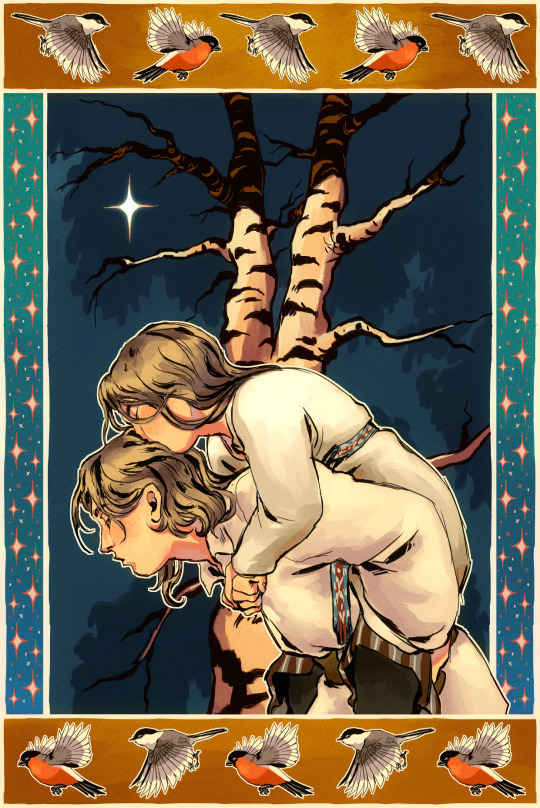
koivu ja tähti
or the birch and the star, is a finnish fairytale written by zachris topelius about two siblings, taking place during "isoviha" (great wrath) or the russian occupation in finland in 1713 to 1721
the siblings are abducted to russia as children and run away ten years later in order to make a journey to find their home in finland, guided by two birds and a memory of their homestead birch tree with a star shining through it's leaves
#finnish folklore#finnish fairytale#koivu ja tähti#topelius#i do a lot of mythology stuff but i wanted to move onto some fairytales too even if there's not much!
652 notes
·
View notes
Text

2K notes
·
View notes
Text
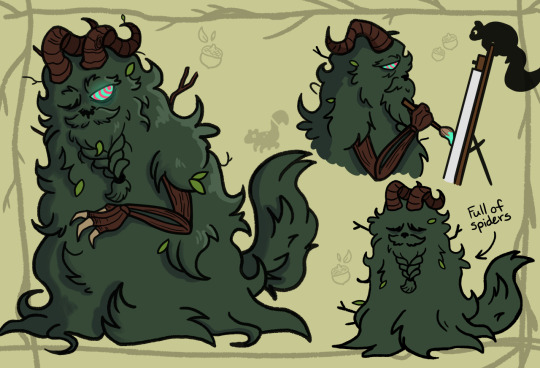

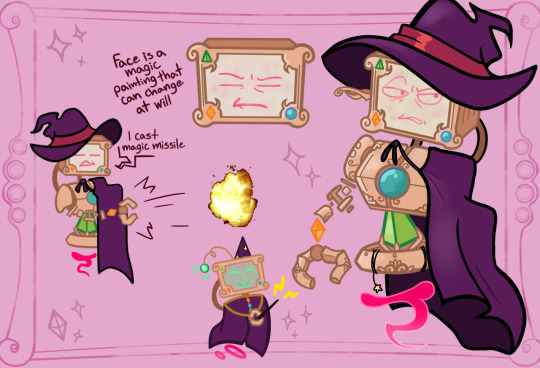

Scrybeswap
I have a lot of scatterbrained design notes for each of them but generally I wanted them to look similar to their original designs but with different themes. I also imagine that they have the same inscribing tools as their original counterparts but just use them differently (i.e. Magnificus paints animals, Leshy takes pictures of people as they're dying/about to die, I'm not sure what the magic equivalent for P03 would be besides maybe a spellbook that copies the essence of things, and Grimora's quill would either "write" code or write directly onto the hardware of robots).
#i initially wanted to finish these for inscryptober but stuff got in the way#misc design notes erm#leshy's death design is inspired by the actual folklore leshy and the leshens from the witcher games#i remember reading somewhere that the folklore leshy incorporates animal bones and tree bark into his own body#so that's where the main inspiration came from#the markings on grimora are meant to be a combination of patterns on porcelain china and the patterns on motherboards#p03's components aren't actually attached to anything and just float around as needed#also its different functions are powered by the mox crystals in its body#magnificus already looks like a big fuzzy animal to me so i just leaned into that#he probably has a bunch of small animals living in his fur without him even realizing#magnificus#leshy#p03#grimora#g0lly#inscryption#my art#scrybeswap
501 notes
·
View notes
Text
Horrorfest: Stay Out of the Basement [Yandere Monster x Reader]
Title: Stay Out of the Basement [Yandere Monster x Reader]
Synopsis: There's something in the basement and it wants you so bad.
For Horrorfest request:
“Theres something in the basement” trope
Word count: 671
Notes: yandere, monster
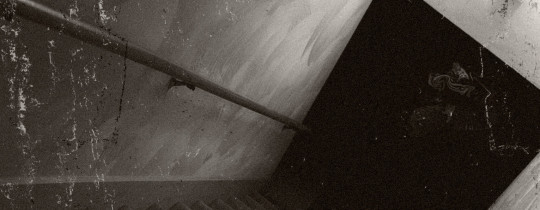
There’s something in the basement.
There’s something in the basement, and you don’t think it’s human.
There’s something in the basement, and you think it’s in love with you.
--
You don’t know exactly when your thoughts on the thing in the basement went from “It wants to kill me and possibly eat me” to “It’s fallen in love with me and probably doesn’t want to eat me.”
Maybe around the time that you started finding scraps of plants--vegetation and dirt with hints of flowers, scraggling things that barely saw any light--on your kitchen counter, complimented with a telltale track of dirty footprints leading to the basement stairs. Yes, that was around the time that you began to think whatever was in the basement had feelings for you.
The flowers (and dirt); then came trinkets. Little rocks, sometimes jagged, sometimes smooth. One morning, there was some sort of black stone, shined and polished. You didn’t want to touch it--something about it made your mind absolutely forbid it. You scooped it into the trash with a paper plate and took it to the curb that morning.
If the thing in the basement minded, it didn’t let you know. It only left more gifts. More footprints. More--and you swear this must be what it’s doing--signs that it exists and it likes you. Tapping noises from behind the doorway leading to the basement stairs--tap-tap, tap; jars of long-forgotten canned goods left in front of the door, black-mud streaks on the bases.
You haven’t seen it, but you know it’s there. And you know this won’t last forever. You know it won’t be satisfied with leaving gifts and trinkets and tap-tap, tapping to get your attention.
No one believes you. Not your parents, not your friends, not the police. Not the therapist you called out of desperation.
You’re alone--only oh, how you wish that were really the case.
--
There’s something in the basement.
There’s something in the basement, and it wants you.
There’s something in the basement, and it’s coming up the stairs.
--
Your fingers grip the edge of your comforter, but you don’t dare bring it up over your face. You want to see it coming.
And you know it’s coming. It’s only a matter of time now. You can hear it.
You first heard it coming up the basement stairs--thudding, thudding, thudding--and now you hear it coming down the hall. It’s not the steps of a person. It’s a heavy sound, almost dragging and--oh, someone help you--slightly damp. Like the basement. Like the sweat on the back of your neck, staining your pillow beneath you.
Like the stupid tears pooling at the edge of your eyes. What good would they do you? None.
They fall anyway when the half-closed door creaks open.
Your bedside lamp is on, and if you were smarter, you would have turned it off 10 minutes ago. It would be must easier to face this reality in the dimness of the night, if you couldn’t see exactly what was standing in front of you.
It’s tall and broad shouldered.
It has a mouth and eyes and a face, yes, and you might be tempted to call it humanoid. There are two arms and two legs, heavy and covered in something black, like it’s painted itself with dirt and mud. Its skin is splotches of green, dark and faintly damp, like moss growing at the edge of a swamp. Two yellow eyes blink at you and you don’t think you’re imagining it when your brain interprets its gaze as… fond. Loving. Wanting.
It opens its mouth and there are teeth--sharp--and you think it must be trying to smile. Trying to smile and then say something to you.
What finally comes out, warbled and deep, is your name.
You do pull the covers over your head, then.
Not that it does you any good.
--
There’s something in the basement.
There’s something in the basement, and you’re there with it now.
And neither of you will ever leave again.
1K notes
·
View notes
Text

Considered one of the oldest traditions in Scandinavia, the Julbock or "Yule Goat" was the bringer of gifts to the household. Having a Julbock in your home is a symbol of "Jul" and a time of good cheer.
“Julbocken” (1917) by John Bauer
#yuletide#yule#yule aesthetic#hedge witch#witchcraft 101#witch stuff#folklore#witchcraft#witchblr#pagan witch#magick#witchythings#witch#spells#witchy shit#paganism#yule goat
383 notes
·
View notes
Text
#taylor swift#ts#taylor eras#tswift#eras#katalina posts taylor stuff#folklore#cardigan#exile#mirrorball#seven#august#epiphany#betty#peace#hoax#tswjft
132 notes
·
View notes
Text
Nerdy cultural details about the word "Hashira"
Some details can be hard to pick up without context or in translation. I recently went over a few details about the Hashira's names, Breaths, or symbols, but today I want to focus on the word "Hashira."
To get this out of the way, I use "Pillar" all over this blog because I thought that's what they were called. I was astounded that phrase was not translated, as it is a (somewhat rare) case of a one-to-one translation equivalent. They are the pillars that support the Demon Slayer Corp, after all. The kanji for it (柱) very literally means "pillar" in any modern day Japanese to English dictionary. But since you all know the word "Hashira," let's climb up and see where it takes us!
First, the kanji itself (brought over from China and given the Japanese pronunciation "hashira," based on the existing spoken Japanese language), is composed of 木 for "tree" and 主 for "master" or "main/principal," among other semi-literal or more widely applicable possible meanings in modern kanji dictionaries. However, Prof. Owada Tetsuo, a retired university professor who published an unofficial book of his own Kimetsu no Yaiba interpretations based on Japanese demon slaying folklore, points out that 主 can also be interpreted as a still flame atop a candlestick, and that 柱 (hashira) is a tree that cannot be moved. (I'll continue to use a lot of Prof. Owada's details in this explanation, as well as details I have picked up in other research.)
That makes 柱 closely associated with holy trees found in, or treated as, Shinto shrines throughout Japan. As Shinto is a nature-based belief system, trees are often something that a kami (deity) will inhabit. Keep Shinto in mind, because we're going to focus on that a lot.
Before that, let's finish up with the kanji 柱. According to the first official fanbook, there is an upper limit of nine Hashira because there are nine strokes in the 柱 kanji. (See this dictionary entry for a breakdown of those nine strokes.)
Now that the easy official tidbit is out of the way, back to the Shinto fun stuff and conjecture! We need to dive a bit more into the spoken Japanese language, from which a lot of Shinto terms derive.
For starters, the Japanese language uses counter words for when you say a certain number of beings or objects. You could think of this as "a sheet of paper" or "three rolls of tape." It is an annoying part of starting out your study of the language because there are a lot to memorize based on sizes, shapes, types of animals, etc. Deities also have their own counter word: 柱 (hashira). This goes to show how the Hashira of the Demon Slayer Corp are something more than human, what with how much power they possess.
Now if we think about the pronunciation of the spoken Japanese word from long before a Chinese written character was assigned to it, the "hashi" of "hashira" is a "bridge." Clever ones among you might know that "hashi" also means "chopsticks." But even chopsticks have the same effect as a bridge! They serve as a connection, bridging the gap between you and what was another living thing, that which will become a part of you as your sustenance. "Hashira," as pillars, are likewise something that serve as a connection, in this case, a vertical one. They are that which connect us with the heavens, or in the case of the Demon Slayer Corp, they bridge the gap between the limits of human strength and the inhuman strength of demons.
As another Shinto tie, one of the connections that Prof. Owada and I both made was that there are nine pillars that support the main sanctuary in shrine architecture like that of Izumo Taisha Grand Shrine. Or rather, in the case of at least one of the historical iterations of Izumo Taisha, there were nine groups of three massive tree trunks each, resulting in a shrine over 48 meters in height (see here for photos of how big the remains of those pillars are and how exciting the archaeology is). These pillars give you a sense of awe for just how powerful pillars can be, especially when you have a spread of nine to distribute the weight.
Now, there's more that Prof. Owada and I would both say about how Izumo Taisha also ties in with the "Ubuyashiki" surname or the "yakata" title by which the Hashira address him, but that's a dose of nerdery for some other time.
#kny nerdery#kny reference#kny references#I forget which tag and I'm sticking it in there for the official fanbook bit#otherwise this is what My Research makes possible#thank you My Research#and thank you Prof. Owada's Research even though I think you're stretching too far to make connections#for the sake of talking about other nerdy folklore stuff in a KnY themed book
122 notes
·
View notes
Photo
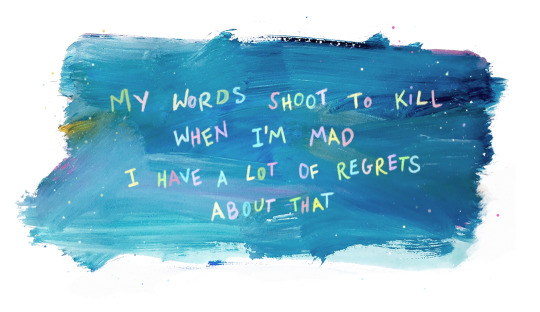
i just wanted you to know that this is me trying
#taylor swift#tswiftedit#tswiftedits#tswiftlyrics#taylor swift folklore#this is me trying#candy swift#my stuff#typography#gouache#handwriting
2K notes
·
View notes
Text


faerie thoughts...
#oc stuff#pareidolia tag#worldbuilding#speculative biology#folklore#fairy#faerie#fantasy#bestiary#lore#this is part 1 kind of... connecting it a bit to some tomte thoughts as well#yes this is partly sparked by wanting fantasy hrt in pareidolia dont think about it too much
245 notes
·
View notes
Text
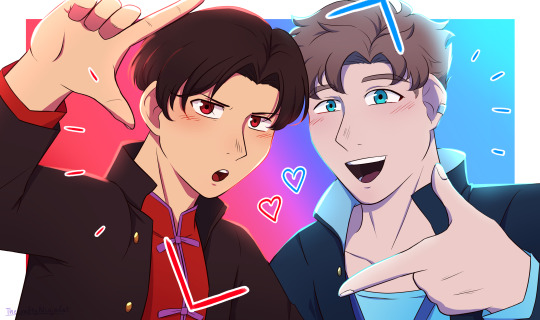

hiroko utsumi you've done it again....
#bucchigiri?!#arajin tomoshibi#matakara asamine#crafty draws#the folklore parallels got me again....man#i'm proposing#karajin#as an alternate ship name#solely bc there's a lot of unrelated stuff in the MaJin tag lol
162 notes
·
View notes
Text
Randomly thinking about “tolerate it” (narrator voice: it was not random) and how under the cloak of fiction it is ostensibly inspired by works like “Rebecca” (which Taylor said she read during the 2020 lockdowns I believe?), with the line of “you’re so much older and wiser” indicating that the speaker is significantly younger and inexperienced compared to the person she’s speaking to and a pretty direct reference to the plot of the book.
But I saw something somewhere once that stuck with me about how it might not be referring to relative age between the characters but chronological age as in the passage of time in a relationship. And that made me think about how in a contemporary context, it might not necessarily be referencing an actual age gap between the two characters, but rather a sarcastic or cynical response to the man’s claims that he has matured (“you’re so much older and wiser [than you were before/than you were when we met/etc.]”), which then made me think about that line in relation to the woman. And that it could be taken like, “you act like you’ve matured so much in our time together and like you know everything, while I’m supposedly still stuck as the girl I was when we first met.”
Which then made me think of the “right where you left me” of it all and did you ever hear about the girl who got frozen time went on for everyone else she won’t know it and the bit in Miss Americana where she talks about how celebrities get frozen at the age at which they got famous, and how she’s had to play catch up in a lot of ways not just in her emotional growth but kind of in general. (Which also made me wonder if she’s ever been called out for immaturity/lack of curiosity/lack of education about things in her life…)
Which then made me think about the rest of the song, and @taylortruther’s posts yesterday about “seven” and “Daylight” and the way Taylor idealizes her youth yet contrasts it with an almost sinister reality in its wake, and the line, “I sit by the door like I’m just a kid,” because the discussion raised that her relationship let her recapture some of the childlike joy and wonder she’d lost. So this line is a double-edged sword: the speaker sits by the door with childlike hope that the person will come home and cherish her, but on the darker side, feels like the child dealing with the monsters she doesn’t have names for yet and the feelings of isolation she felt as she aged.
I’m not saying the song is necessarily autobiographical; like most of the songs on folkmore, it’s clearly a fictionalized story based on media she’d consumed and created, but we know a lot of the fictional songs were infused with her own feelings and experiences and… This idea swirling in my head picked up steam and now I kind of can’t stop thinking about it. Sorry but I’m a little obsessed now.
Like maybe it might start to shed light on why she identified so strongly with the novel in the first place…
#the third eye has been opened#😵💫#like tolerate it was always a difficult song#even when we learned it was based on Rebecca it obviously took on new meaning post-joever#and especially in light of ttpd#but the thought spiral i went on last night when i started thinking about all these connections#and the evermore of it all#I’m Charlie at the conspiracy board again#writing letters addressed to the fire#me thinking too hard about Taylor lyrics#evermore my beloved#tolerate it#i kinda gave myself the ick with all this 😵💫#because of the ttpd of it all coming up#and i feel like i remember interviews where Taylor said joe was so well-read especially about like world events and politics and stuff#and supported her when she wanted to start speaking up (not getting into that)#but just based on ~vibes now I wonder if that was like a sore point too at some point#which again i have no proof of but just like… experience with pretentious millennial art bros lol#oh man oh man oh man#this feels like some sort of huge revelation at 1:00 am#when i started writing this lol#eta: when I queued this in the middle of the night i didn't see all the excellent discussion about the seven/folklore posts#so all of you who have been posting about them this morning consider yourselves tagged too!
110 notes
·
View notes
Photo

722 notes
·
View notes